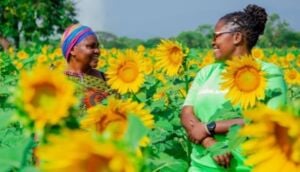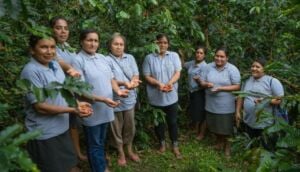Tracking what happens up and down a company’s value chain, where and how poor people engage, can be massively revealing. So I welcome the new report, ‘Exploring the Links between International Business and Poverty Redu…; The Coca-Cola/SAB Miller value chain impacts in Zambia and El Salvador.’
It’s not earth shattering, but that is precisely why it is good. It does not try to trounce you with multiple zeros on dollar figures that demonstrate just how big and important these companies are. It does not trumpet corporate glory nor slam corporate greed. It instead covers many different aspects of the two companies’ footprints on poverty – on jobs, on women, on water supplies – defining the positives and highlighting areas for improvement.
For any manager sitting inside Coke or SAB, it gives an invaluable To Do list for many Monday mornings to come. For the rest of us, is it useful? Yes. It’s not so ground-breaking as the Oxfam Unilever collaboration in Indonesia, which truly broke the mould, but it continues that tradition.
This report reinforces some of the messages that we also see elsewhere: that the highest impact on jobs and livelihoods comes outside the company, at either end of the value chain: in these cases amongst sugar harvesters, truck drivers and informal retailers. This is where people are poor, so engagement is good from a poverty-reduction perspective, but it is where they are vulnerable so care and scrutiny is needed. It is more difficult for companies to control or enhance their impacts at the further ends of supply or distribution, but that is precisely why this kind of assessment is needed to help guide action.
The report demonstrates to others one good way to think about impact, using Oxfam’s Poverty Footprint. It combines scrutiny of the each link in the value chain with Oxfam perspectives on less tangible issues that matter – women, water, and empowerment. It is co-produced by Oxfam and the two companies.
Any impact measurement approach has its weaknesses. This one, by the fact it covers so many aspects of the ‘footprint’ runs the risk of covering multiple issues in monotone – is it more significant that 3,741 jobs in Zambia are supported directly and indirectly by the Coca-Cola/SAB Miller value chain, that 45% of post-consumer plastic waste in El Salvador is linked to the Coca-Cola/SAB Miller value chain, or that 25% and 36% of total procurement spending is spent locally, in Zambia and El Salvador respectively. The conclusion provides a welcome sense of priority, where 3 issues are picked out for action: support for local enterprise development along the value chain, further action to recruit, train and support women; analysis of water use, management and of water impacts along the value chain to protect community access to water. While avoiding pointed criticism, it is clear there is plenty more the companies can and should do.
The poverty footprint combines numerical analysis with company interviews and community views. Recent ‘economic footprint’ reports, such as Ethan Kapstein’s on Unilever in South Africa, or Standard Chartered in Ghana and Indonesia, focus on the use of multipliers and Social Accounting Matrices to calculate the extent of the economic contribution: direct, indirect, and induced effects. On such quantitative calculations, the Zambia/El Salvador study cannot compete. It touches on gross and net value added, but somewhat roughly using multipliers plucked from elsewhere. But its strength lies in the bits that go beyond these big numbers, to bring together the views of company staff and community participants, on how the value chains affect their jobs and their livelihoods: the good, the improvable, and the interesting. This adds a lot more value than a few more zeros or decimal points.
Having led or reviewed several value chain analyses in the tourism sector, I can confirm that they invariably combine lots of things that different people know to make a bigger picture than no one had glimpsed before. Perspectives of many plus data from multiple sources build a jigsaw, even if a few pieces are still missing. For those that have made the jigsaw, the next step is to change it, finding those market-based solutions that enhance engagement of low income people in viable ways. For those that haven’t, it’s time to get going with making jigsaws.










